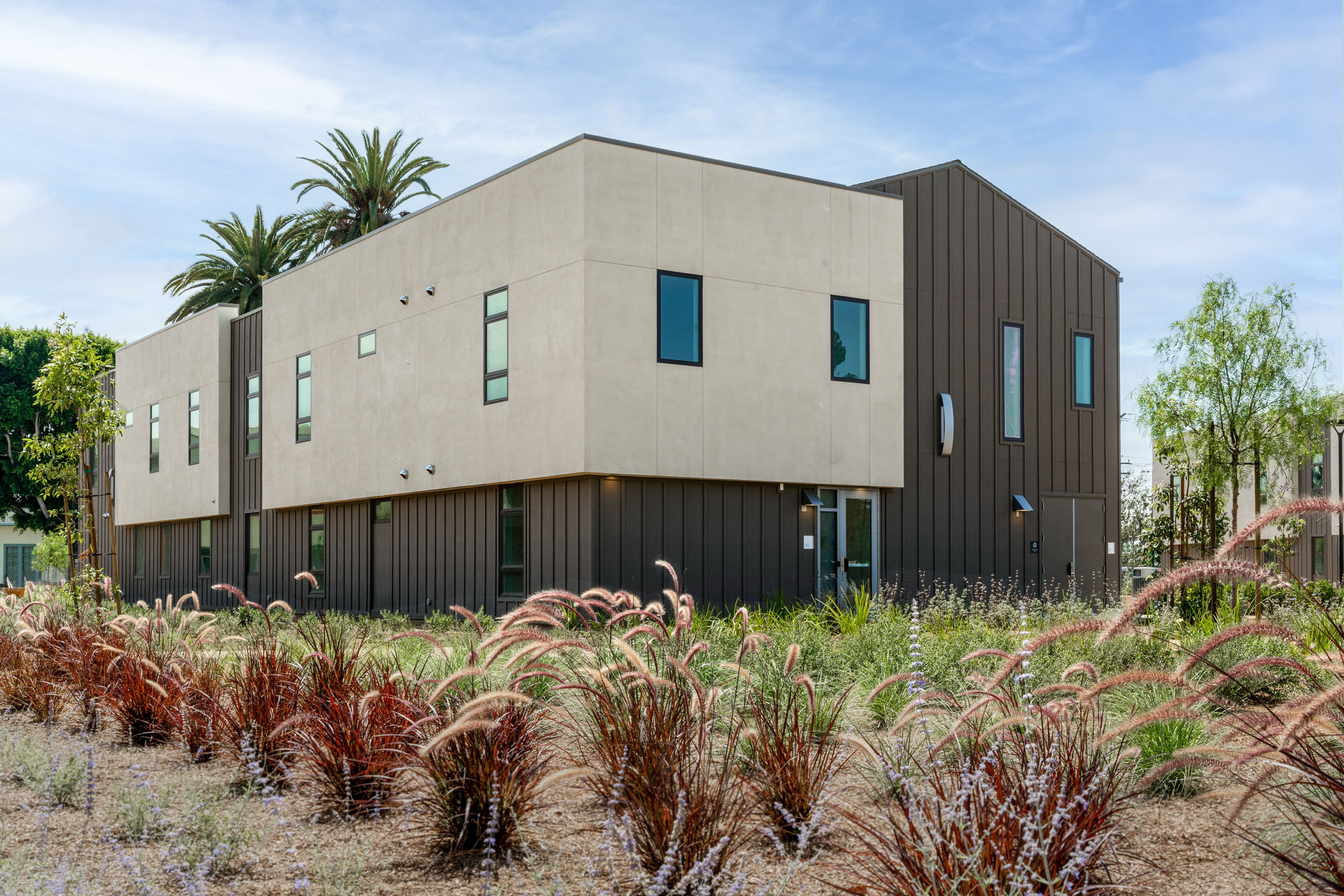Story at a glance:
- Drought tolerant landscaping—also known as xeriscaping—describes the practice of landscaping with hardy plants which require infrequent watering.
- Aside from conserving water, drought tolerant landscapes also help reduce a building’s utility bills, encourage biodiversity, and reduce soil erosion.
- Effective drought tolerant landscapes typically include a large percentage of plant species that are native to a project’s region.
As the effects of anthropogenic climate change worsen, droughts are projected to increase in both frequency and length. Current estimates suggest that approximately 55 million people are affected by droughts each year, though that number is projected to increase in the coming years, according to the World Health Organization.
Droughts are some of the single most devastating hazards to humans, livestock, and crops around the world, especially for those living in naturally arid, dry regions where water is already scarce. Indeed, many states and cities in the southwestern United States have enacted regulations limiting water use (especially with regard to landscape irrigation) as a means of conserving water during these prolonged dry spells.
As a result, more and more landscape architects and their clients are choosing to incorporate drought tolerant landscaping into their projects.
What is Drought Tolerant Landscaping?

Photo by Ric Berryman
Also referred to as xeriscaping or water-wise landscaping, drought tolerant landscaping is the practice of sustainable landscaping with native plant species that possess a high tolerance to drought and drought-like conditions. Due to various evolutionary adaptations—thick waxy coatings, trichome hairs, lateral root systems, or improved water storage capabilities—these plants do not require as frequent watering compared to other plants.
Note that we say drought tolerant plants do not require as frequent watering rather than zero watering, as there is a common misconception that these landscapes require no irrigation or external watering to be successful. This is, of course, not true. In fact, most drought tolerant plants will need at least one or two growing seasons during which they receive regular watering before they are truly made tolerant of future drought periods.
Drought tolerant plants still require supplemental watering during periods of extended drought, though typically far less than plants with more intensive water needs.
Drought Tolerant vs. Drought Resistant
Drought tolerant and drought resistant landscaping are terms that are often used interchangeably despite referring to two different things.
- Drought Tolerant. Drought tolerant landscaping refers to the practice of landscaping with plants that are capable of growing and thriving with minimal rainfall, or those which typically only need water once every few weeks or once a month.
- Drought Resistant. Landscaping for drought resistance takes this one step further, as drought resistant plants can survive for extremely long periods—possibly even years at a time—without rainfall or water.
In the long run drought resistant landscaping is more resilient than drought tolerant landscaping, which makes it a better option for projects in extremely dry, drought-prone regions—but deciding which one is right for your project ultimately depends on local climate and rainfall patterns.
The Benefits of Drought Tolerant Landscaping
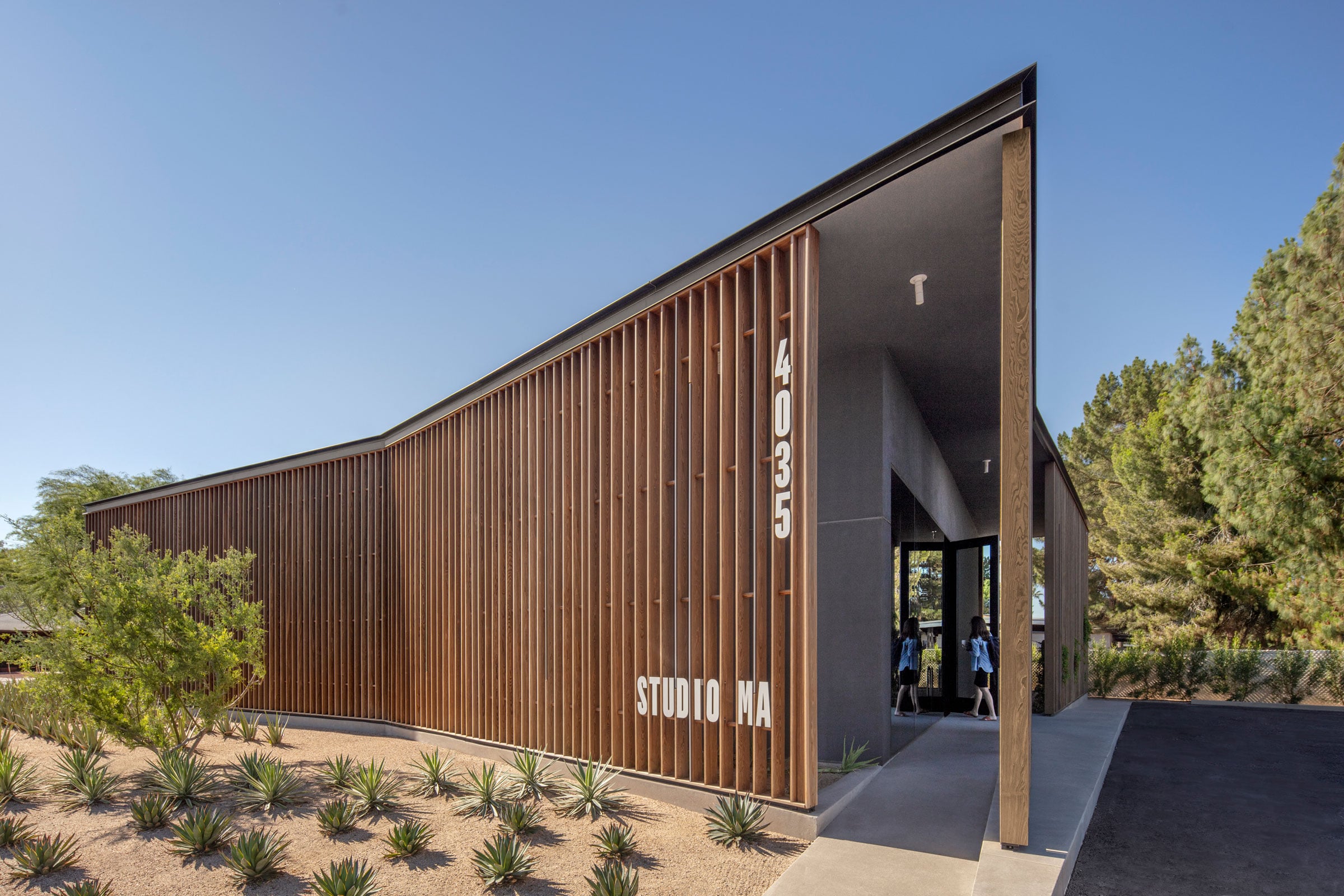
Studio Ma’s headquarters features drought tolerant landscaping and utilizes an array of green design elements to reduce its environmental impact. Photo by Bill Timmerman
Aside from the immediate and obvious benefit of requiring less water than conventional landscaping, drought tolerant landscaping has a few other advantages, including:
Water Conservation

Located in California’s High Desert region, this modern cowboy retreat designed by architect Jeremy Levine aims to conserve water wherever possible—especially when it comes to landscaping. Native drought tolerant plant species were chosen for their hardiness and low water requirements, as well as to minimize the building’s impact on the existing site. Photo by Lance Gerber
Predictably, the main benefit of drought tolerant landscapes is that they help conserve water. In the US an average of 9 billion gallons of water is used per day for residential landscape irrigation. Most of this water is consumed in an attempt to preserve the manicured lawns that Americans hold so high in esteem—despite being entirely unnatural features that, more often than not, are seeded with a single species of grass that requires vast quantities of water to survive.
Landscaping with drought tolerant plants, on the other hand, helps reduce outdoor water use by as much as 75%, which in turn translates to lower water bills and reduced operating costs.
Reduced Soil Erosion
Drought tolerant plants form longer taproots and more complex root systems than conventional lawn grasses, as these allow them to access deeper groundwater reservoirs once the upper soil layer dries out. These deep-set root systems, however, have the added benefit of improving the surrounding soil’s resistance to erosion caused by wind and water, which in turn helps prevent the loss of crucial topsoil and ultimately improves long-term soil health.
Increased Biodiversity
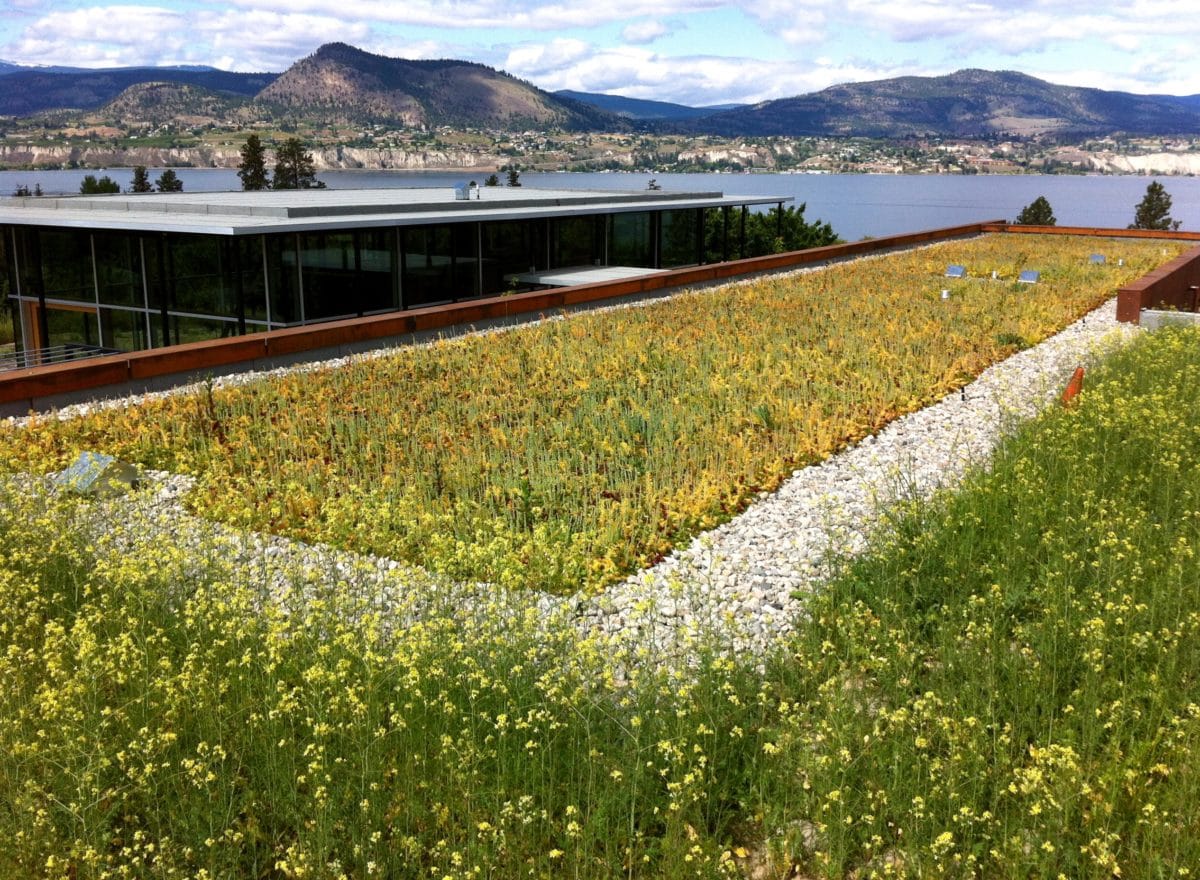
This extensive green roof employs a range of flowering drought tolerant plant species to attract bees and butterflies. Photo by Brett Ryan Studios
When done using native plant species, drought tolerant landscaping helps foster biodiversity by increasing availability of natural habitats required by native animal and insect species. This is especially true when drought tolerant flowers—such as Black-Eyed Susan, sunflowers, coneflowers, and even certain species of thyme—are planted, as they attract butterflies, bees, and other vital pollinators.
Extensive green roofs—that is, green roofs that require little maintenance and which are designed to be self sustaining—are excellent ways in which biodiverse drought tolerant landscapes may be incorporated into dense suburban neighborhoods and urban cityscapes with very little available green space.
Greater Climate Resilience
As temperatures continue to increase as a result of anthropogenic climate change, more and more regions around the globe are beginning to experience droughts and prolonged dry periods. Conventional lawns and other forms of landscaping, however, typically aren’t designed to be sustainable, nor are they particularly capable of adapting to changing climatic conditions and rainfall patterns.
Drought tolerant landscapes, on the other hand, offer increased resilience when it comes to climate change and global warming, as they are designed to emulate and mimic the natural adaptive processes of established regional ecosystems. Being able to weather longer dry seasons without sustaining significant damage means drought tolerant landscapes are, by all accounts, a necessary addition to man-made landscapes around the world.
Low Maintenance
Finally, drought tolerant landscapes are generally considered to be relatively low maintenance—especially once they’ve been established—as they do not require as much time, energy, and money when it comes to watering, pruning, weeding, fertilizing, or other typical landscaping duties.
That said, drought tolerant plants do have similar maintenance requirements to conventional plants during the first one to two years of being in the ground, and will require frequent watering, weeding, and some pruning before they are properly established. Once the plants have completed this preparatory phase and are acclimated to their surroundings, their maintenance requirements will drastically decrease—provided, that is, that their soil, sunlight, and drainage needs are met.
Drought Tolerant Landscaping & Native Plants
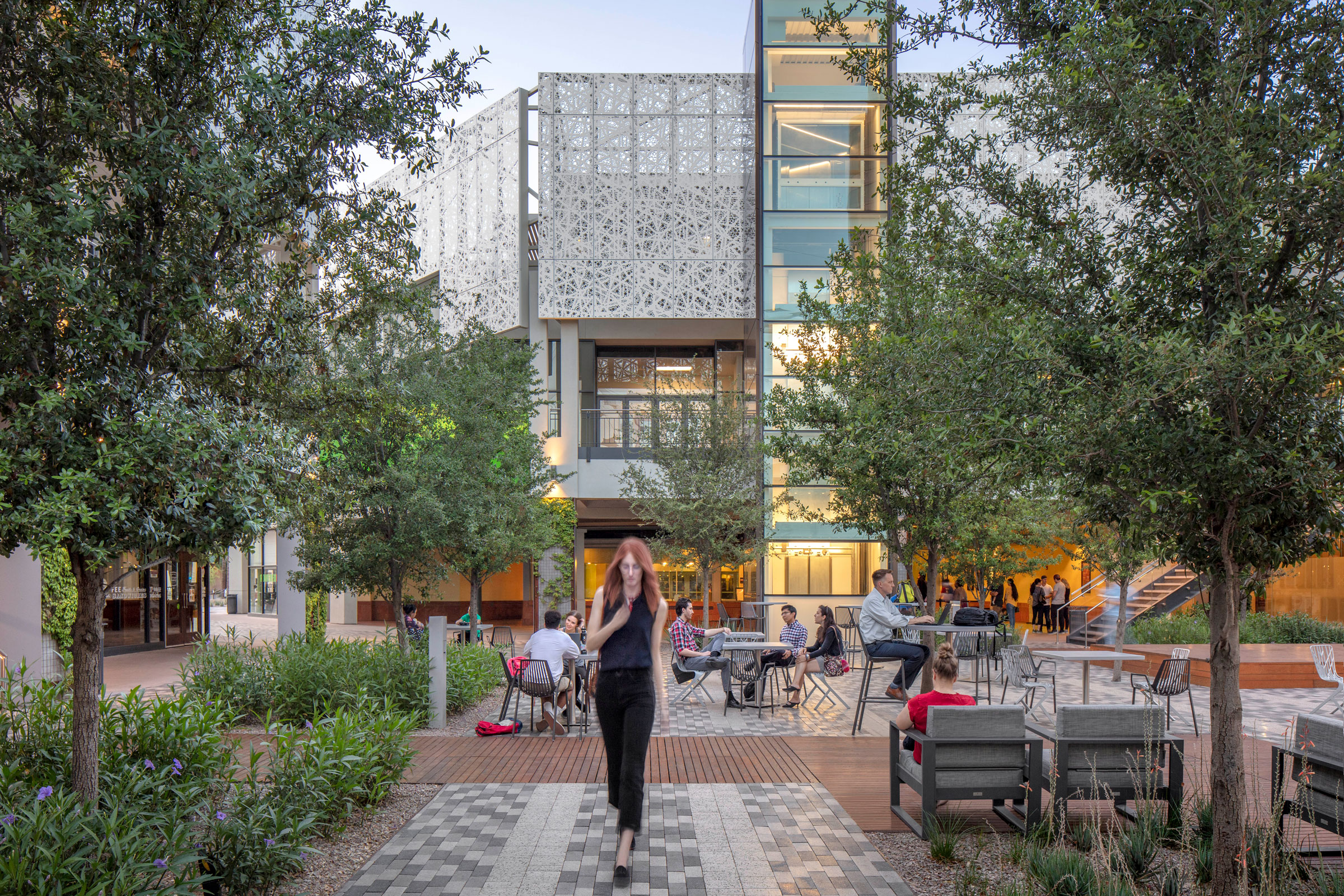
Native, drought-tolerant plants ornament the welcoming entry ways and the urban plaza at the Arizona Center. As you reach the central plaza, southern live oak trees line the outdoor seating areas to provide a sense of place and, eventually, to be a main source of shading. Photo by Bill Timmerman
We’ve mentioned the use of native plants in drought tolerant landscaping several times, but let’s take a moment to unpack what constitutes a native plant and why you should use them in drought tolerant landscapes.
What are Native Plants?
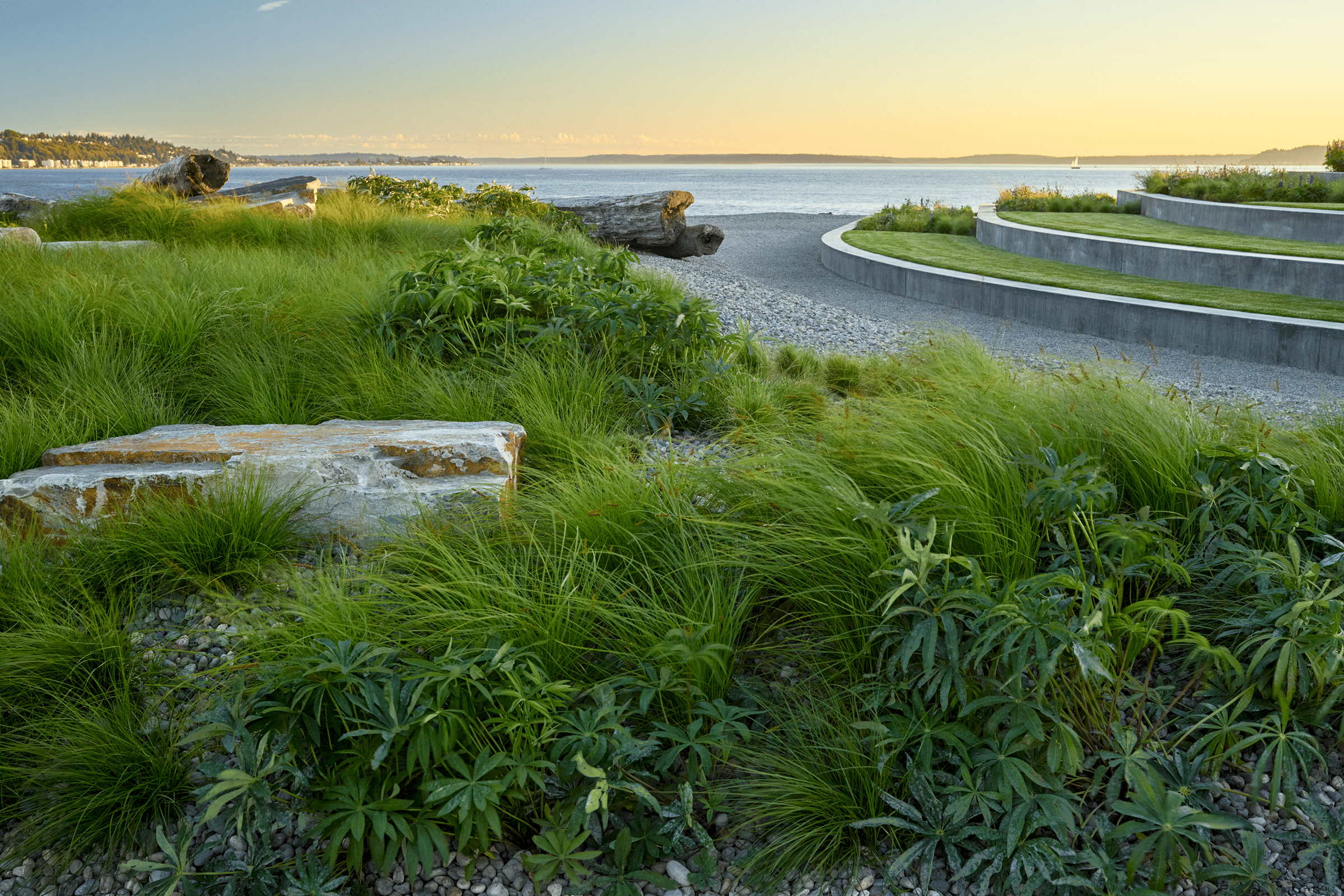
Surfacedesign’s planting approach was to use native plants of Puget Sound as well as plants that increase wildlife. Photo by Marion Brenner
In the fundamental sense, a native plant—be it terrestrial or aquatic—is any plant species endemic or indigenous to a certain geographic or climatic region that has evolved alongside other members of its ecological community for thousands of years and which now occurs naturally in that environment.
Every plant is native to somewhere, and in North America plant species that existed prior to European arrival and colonization are considered to be the continent’s native plants. Of course, that doesn’t mean plants indigenous to the Pacific Northwest are native to the Southeast or vice versa, as geographic location, climate, weather, and several other factors determine habitat distribution and the consequent development of local flora and fauna.
When the Expedia Group hired Surfacedesign to redesign their small stretch of waterfront access, for example, the firm sought to recreate the natural landscape by employing plants native to the upper Pacific Northwest coastline.
“Within The Beach, the planting approach is designed to emulate the character of the Puget Sound by using four native grasses (Carex pansa, Carex vulpinoidea, Deschampsia cespitosa, and Elymus mollis) accented by native perennial plants in soft hues,” Michal Kapitulnik, a partner of Surfacedesign, previously wrote for gb&d. Despite being native to the continent, some of these species would not survive if they were planted in, say, the Midwest or Northeast—in that regard, their success is dependent upon the local environmental conditions they evolved alongside.
There are certain plant genera that are widely distributed across the United States, of which include a multitude of unique species that have adapted to a wide variety of regions and locales. Some of the most common drought tolerant genera include:
- Quercus (Oaks)
- Spiraea (Meadowsweets and Steeplebushes)
- Juniperus (Junipers)
- Pinus (Pines)
- Taxus (Yews)
- Rudbeckia (Coneflowers)
- Echinacea (Coneflowers)
- Sedum (Sedum)
- Gaillardia (Blanket Flowers)
- Achillea (Yarrow)
In general it’s recommended you consult with local native plant experts before deciding which species to include in projects that require drought tolerant landscaping. Visiting local demonstration gardens or arboretums can also provide insight as to which species to include in a drought tolerant landscape.
Why Landscape With Native Plants?
While it’s not absolutely necessary that every single plant used in drought tolerant landscaping be local to the region, it’s generally recommended that you choose native plant species whenever possible, as this helps promote biodiversity and provides habitats as well as sustenance for native birds, insects, mammals, reptiles, and other native organisms.
What’s more, native plants are almost guaranteed to be hardier and better adapted to local environmental conditions than any non-native plant species you introduce, which means they’ll require less time, energy, and water to care for. Landscaping with native drought tolerant plants also negates the risk of introducing potentially invasive plant species into the surrounding environment.
The Role of Hardscaping in the Drought Tolerant Landscape
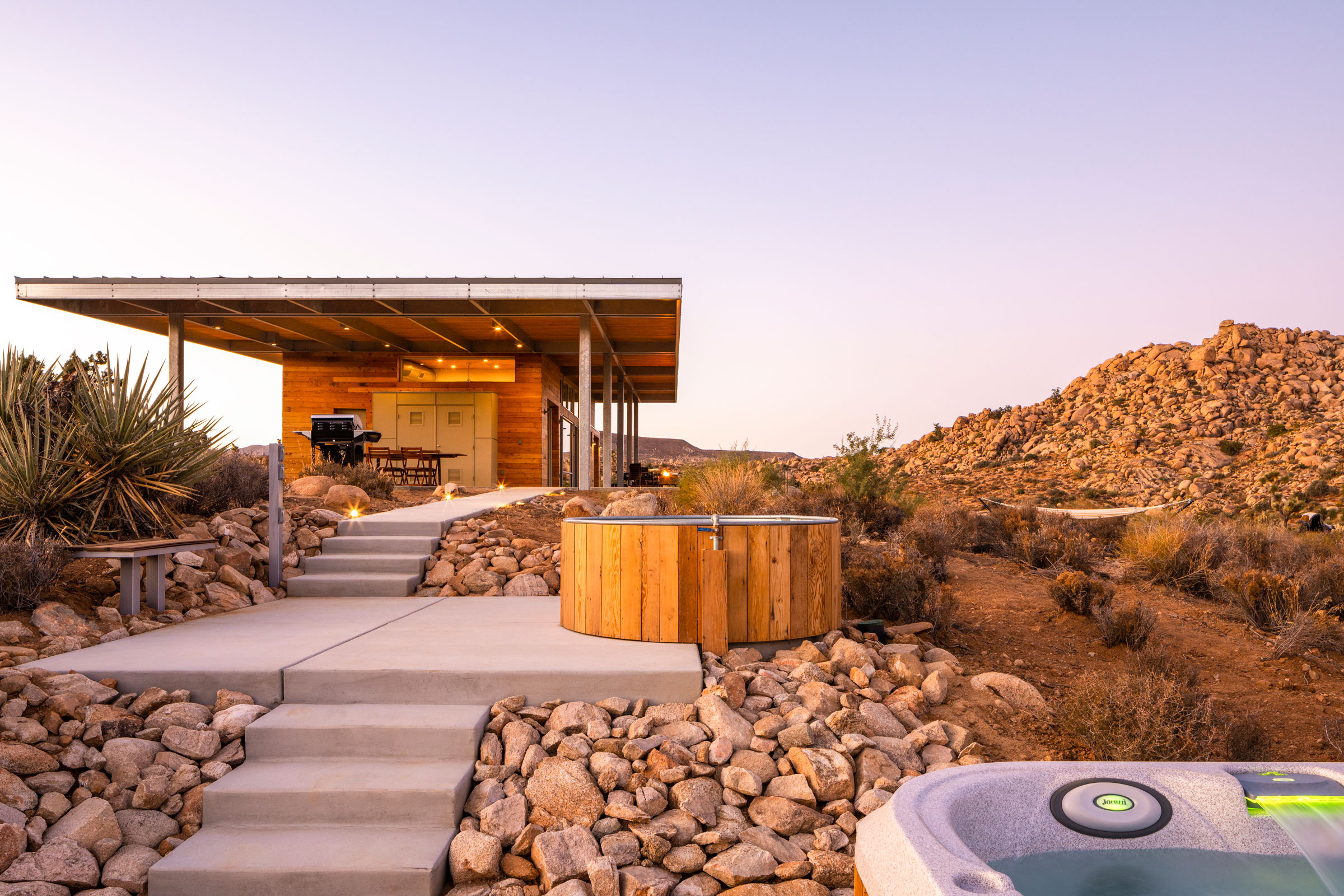
Hardscape elements like paved walkways and permeable rock embankments accompany the drought tolerant plants at this desert residence. Photo by Lance Gerber
While the term “drought tolerant landscaping” often invokes the idea of sparse vegetation grown in red, rocky soil, accentuated largely by stone pathways, dry stone riverbeds, and paved surfaces, the truth is hardscaping—that is, the man-made features used in landscape architecture—need not be so one-dimensional.
In fact, just about any hardscaping element employed alongside conventional landscaping—be it walkways, benches, patios, fire pits, pergolas, etc.—can easily be incorporated into a drought tolerant landscape. After all, there is no singular style associated with drought tolerant landscaping, which means your design options are virtually endless.
That being said, certain hardscape elements like gravel, porous pavement, and stepping stones are typically favored due to their permeability, which makes it easier for rainfall and/or irrigation to reach the soil. Due to the low-maintenance nature of the plants used in drought tolerant landscaping, hardscape features that require minimal maintenance are often employed as well.

